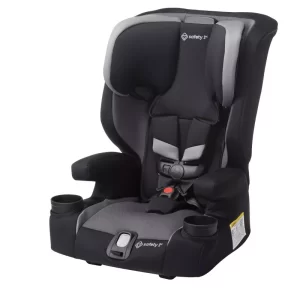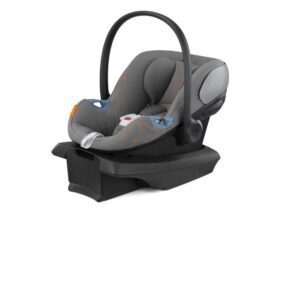The Chevy Celebrity Sold Like Hotcakes, And That Probably Saved Lives

The ’82 Celebrity goes up against a crash barrier at 35 mph – and passes with flying colors.
The Chevy Celebrity, made from 1982-1990, is probably remembered today for its goofy “Eurosport” version – it was neither European nor sporty – it was rather standard 1980s midsize car fare; a sedan, coupe, or wagon were offered, and all were boxy; a choice of an underpowered four-cylinder or an adequate V6, carbureted early-on, fuel-injected starting in ’87; a 3 or 4 speed automatic or a 5 speed stick shift; and a base price of $8,313 in its introductory year, equivalent to $22,674 today. It was a bread-and-butter midsize car from the then world’s-largest automaker, and it sold like hotcakes; production was over a quarter-million from each year from 1984-1988 (with lower, but still high, figures for ’82-83 and ’89), peaking in 1986, when 404,883 Celebritys were made, making it the top-selling car in the United States that year.
At that time, the main measure of a car’s crashworthiness was a full-frontal crash test at 35 mph into a solid wall. Being an everyday midsize sedan, it made NHTSA’s crash test rotation in its inaugural year of 1982; on June 22, 1982, a beige ’82 Celebrity was put through the test.
Driver: 478 HIC, 35 Chest G’s
Passenger: 395 HIC, 22 Chest G’s
Severe Injury Risk: 8% Driver, 4% Passenger.
For comparison, the average 1982 vehicle had a severe injury risk of 29% driver, 19% passenger.
The front end crumpled, but the occupant compartment was basically intact. All four doors were operable just as easily as they had been before the crash. NHTSA’s 5-star rating system, which came out over a decade later (but is applicable to all cars tested in this mode back to 1979), considered a severe injury risk of 10% or less to merit the top 5 star rating; this Celebrity made 5 stars comfortably for both driver and passenger! Let’s also not forget that the Celebrity was one of only 3 out of 20 vehicles tested for the 1982 model year where all doors were easily operable. The only blemish was a small amount of fuel leakage, though it was within the federal standard of the time. A fire would be possible, but very unlikely.
The passenger’s chest G force of 22 was never equaled again in another NHTSA full-frontal test under the 1979-2010 protocol – meaning this Celebrity held its record for 28 years! The driver’s chest G of 35 would have still been considered good in 2010 – when driver chest G’s averaged 42. As for the HIC, the average of the driver and passenger HIC on the Celebrity was 437. The average HIC in this test did not drop to 437 until 2004, a full 14 years after the Celebrity ended production – and 22 years after this crash test. Since average HICs – and chest G’s – leveled out in the 2000’s, that means that this Celebrity’s performance in terms of injury measures would still be considered acceptable by today’s standards.
Of course, new crash tests have been introduced since the Celebrity’s time, and the Celebrity, like all 1980’s vehicles, lacks now-vital safety features such as airbags, reinforced side-door pillars and electronic stability control. Just like anything from the 1980’s, it would probably get a big fat Poor on a frontal offset crash test or an IIHS-style side impact. But those tests came decades after the Celebrity’s time.
Sadly, the Celebrity’s successor, the 1990 Lumina, did not do well in crash testing, earning just two stars out of five. In 1995, the Lumina was redesigned, once again becoming a safety leader, doing well in NHTSA tests and acing the then-new IIHS front offset. The 2000 Impala, which succeeded it, also had among the best crash test results for its era. But the closest modern equivalent to the Celebrity is the current Malibu. It does quite well in crash tests – but most of its competitors do just as well.






